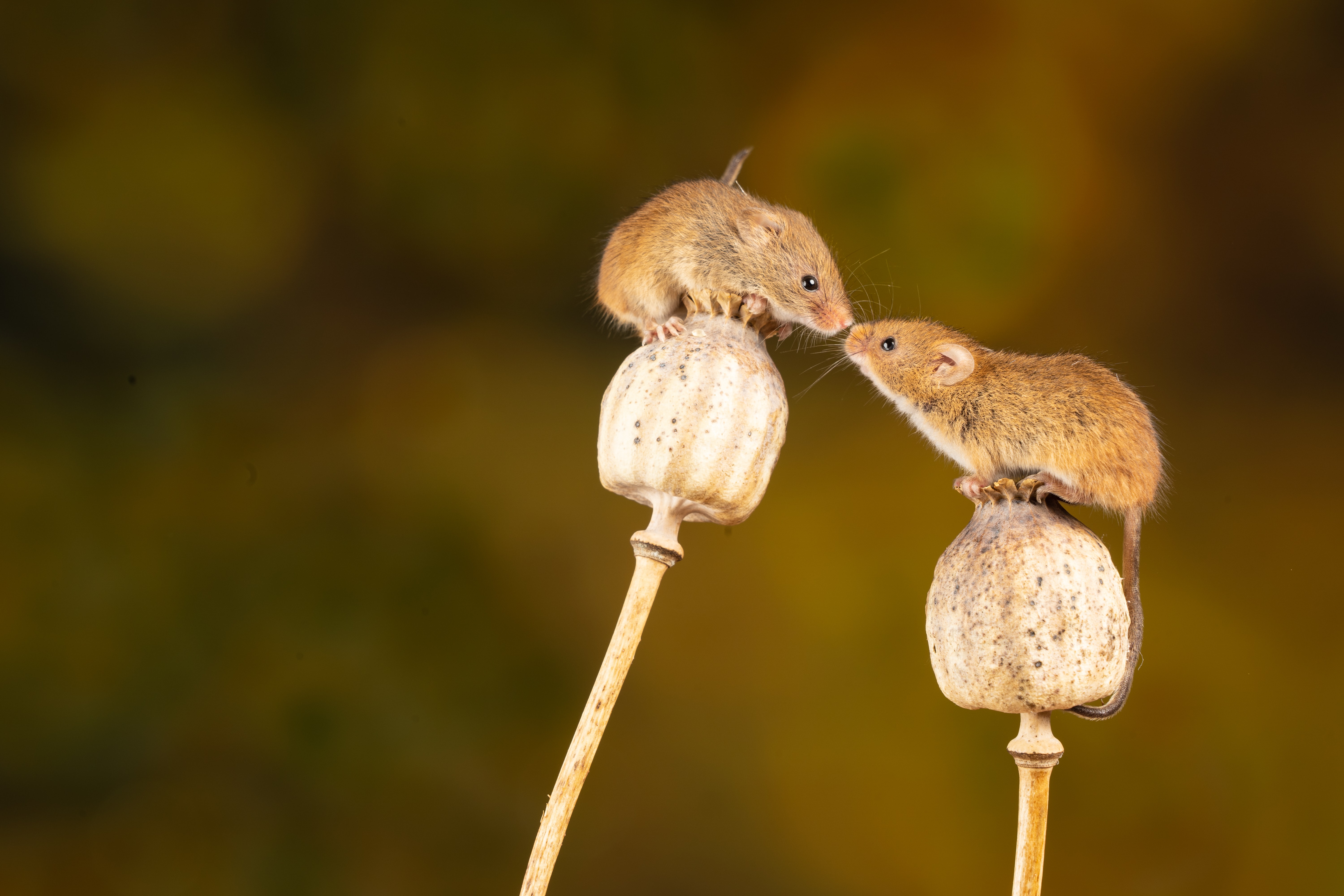How to get rid of mice
Mouse in the house? If you need to know how to get rid of mice, never fear – there are plenty of natural ways to take control


Has something taken a nibble at food in your cupboard or bread bin? A mouse in the house is bad enough, but where there’s one, there is probably a whole family, as these persistent pests multiply rapidly, producing a litter of babies five to 10 times a year.
As well as causing a nuisance and munching on your supplies, they can spread diseases. Here’s how to get rid of mice – don't expect these methods to get rid of rats, you will need different methods for that.
How to get rid of mice
Like many garden pests, mice are attracted by sources of food and shelter – deprive them of these and you will repel mice from your yard. However, mice can be extremely persistent and because – like squirrels in the attic – they are able to squeeze through the tiniest of gaps, difficult to keep out of your house and garden. Below, we look at ways to get rid of mice for good.
How do I know there are mice about?
Though they’re mainly nocturnal, there are plenty of signs to alert you that mice are about, from the familiar scratching noises to the tangy ammonia scent of their urine. You might even spot one – dead or alive.
One obvious clue is when mice have made a raid on your food cupboards, chewing through packaging to get at a delicious free meal. Turn detective and look out for mouse droppings, from 1/10 to 1/3in (8-10mm), scattered in or around food cupboards or on baseboards.
If mice have established regular runs along walls, floors and baseboards, tell-tale signs are dark greasy smears. Even more icky are the urine pillars they build, made up of urine, dirt and body grease, up to 1½in (4cm) high.
When there are mice in the attic, you may hear scratching noises, smell an unpleasant odor near the hatch and find your pets are interested or bothered by the space.
Where do mice like to live?
Home sweet home for mice is a cozy nest, constructed from shredded material and lined with soft scraps. Likely locations are the loft, basement, the gap between partition walls or within a suspended ceiling.
Mice will also take up residence in the spaces behind kitchen appliances, in understair cupboards, in fact, any quiet nook in your home could harbor these little creatures. Outdoors, mice are attracted by sheds, garages and compost heaps.
How to get rid of mice naturally
Imagine yourself shrunk down to mouse-like proportions and it’s easy to see that the smallest gap or hole is a gaping entry point for mice. In fact, mice can squeeze through a pencil-width gap, scuttle along cables and can climb with ease, even on vertical surfaces.
In the house, to get rid of mice naturally, the remedy is to block up any gaps you find along baseboards, flooring, walls or pipework, ideally with specialist mouse and rat gap sealant.
Examine your home from the outside to identify possible access points. Block up any holes around pipework using stainless steel wire wool and caulking, starting at the lowest points which are easiest for mice to access then do the same further up and at any gaps around the eaves. Any air inlets or vents should not be sealed off but can be covered with a fine metal mesh.
In the garden, invest in a compost bin instead of a compost heap, and dig up or cut back any overgrown planting that’s close to walls. Climbing plants on walls and overhanging branches offer a scaffold to climbing mice, so trim these back.
What's the fastest way to get rid of mice?
The fastest way to get rid of mice is to deprive them of a home – by sealing up gaps – and food. Since the tiniest amount of food, around a tenth of an ounce (3g), will sustain a mouse for a day, it makes sense to scrupulously sweep up crumbs and wipe down surfaces every day.
Move all food storage into lidded glass, plastic or tin containers – in other words, materials that mice can't chew through. To deter mice, choose a trash can and kitchen bin with a firm lid and never leave it open.
What do mice absolutely hate?
Mice hate the scent of peppermint. Dose a few cotton wool balls with drops of peppermint oil and pop them in places that might tempt mice such as by food cupboards, or anywhere you’ve spotted evidence. The scent wears off so you’ll have to repeat this every week or so.
The presence of a cat will also deter mice, so getting a pet one, or temporarily welcoming a neighbor’s cat into your home could scare them away.
For a high-tech solution, plug in an ultrasound rodent repeller, which uses frequencies we can’t hear and electromagnetic interference to ward off rodents.
Using peppermint oil to get rid of mice is also effective, and you can see results relatively quickly too. Plus, this is a natural, humane way to regain control over your home, and experts love it, too.
What are the best mousetraps to use?
No-one likes the idea of killing a mouse. Poisons are horrible, a danger to children and pets, plus mice can become resistant to them, and old-style mouse traps are cruel.
Make your own judgement about the modern electronic traps which zap a mouse instantly with a powerful shock.
It’s good to know there are gentler ways to catch and deal with mice. Humane traps, baited with tasty treats will lure in an unsuspecting mouse, and once he’s trapped you can carry the trap without touching him and release him, preferably on wasteland a few miles from your home. However, bear in mind that if you have a mouse invasion in great numbers this just won't be practical.
How do you completely get rid of mice?
To completely get rid of mice, having tried stopping them access your home and any food on offer in it, the best option is to call in a professional company. They will visit your home, carry out a survey, monitor entry points and advise on the best method to cure the problem.
How to clean up after mice
If you’ve seen evidence of mice in your food cupboards, put on rubber gloves and throw away the affected food and its packaging.
Empty the cupboards and wash all surfaces with an anti-bacterial kitchen cleaner. If you spot mice droppings here or elsewhere in the kitchen, don’t vacuum or brush them away as you might breathe in any particles that are released. Instead, put on gloves and a face mask, spray the droppings with a disinfectant spray then pick them up using kitchen towels. Spray and wipe the area again, then bin the paper towels and the gloves.
Before putting food back in cupboards, seal open packets carefully and store them in plastic or glass containers.
Have mice been at the crockery or cutlery drawers? It’s hard to tell but safest to pop dishes and knives and forks in the dishwasher on a hot cycle and give tea towels and kitchen cloths a hot wash, too.
Sign up to the Homes & Gardens newsletter
Design expertise in your inbox – from inspiring decorating ideas and beautiful celebrity homes to practical gardening advice and shopping round-ups.

Lola Houlton is a news writer for Homes & Gardens. She has been writing content for Future PLC for the past six years, in particular Homes & Gardens, Real Homes and GardeningEtc. She writes on a broad range of subjects, including practical household advice, recipe articles, and product reviews, working closely with experts in their fields to cover everything from heating to home organization through to house plants. Lola is a graduate, who completed her degree in Psychology at the University of Sussex. She has also spent some time working at the BBC.
-
 Emily Blunt gifted Cillian Murphy this $545 pillow – she's 'obsessed' with these luxury pillows, and frankly, so are we
Emily Blunt gifted Cillian Murphy this $545 pillow – she's 'obsessed' with these luxury pillows, and frankly, so are weThe Oppenheimer stars sleep on this ultra-luxe goose down pillow – here's why we love it – plus our affordable alternatives from $35
By Sophie Edwards Published
-
 The great bedding debate: top sheet vs no top sheet − which side are you on?
The great bedding debate: top sheet vs no top sheet − which side are you on?I asked an expert panel of bedding designers whether you really need a top sheet to keep clean and cool or if it's just another ploy to make you spend money
By Emilia Hitching Published